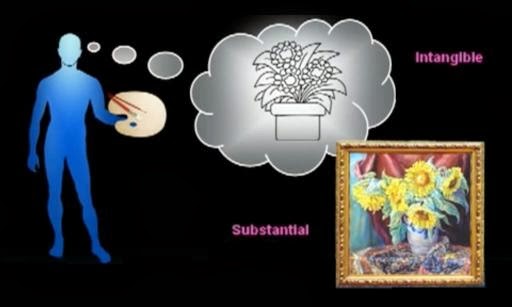We are all familiar with pollen, but I think most of us don’t
know much about the pollination process, nor have we thought about it deeply in
the context of Evolution vs. Creation. I sure didn’t until recently.
In reading a number of articles I quickly discovered that
the process is extremely complicated. One amazing thing that I did not know is
that in the vast majority of plants pollination is required BEFORE a seed is able
to be produced. No pollination, no seeds.
Only about 10% of plants are pollinated by wind or water.
The other 90% require some animal or insect to be involved to transport the
pollen.[1] This is very complicated and difficult to imagine how any
evolutionary process over time and small changes could possibly work. We are
supposed to believe that wonderful harmony and mutual benefit came about
accidentally. Humans have a really hard time producing it on purpose. It’s even
harder to imagine when you learn that some plants do not have random
pollinators, but have specialized to the point that only one particular insect
is allowed to do the pollination.
Pollen has been around for millions of years. It is known to
have remained virtually the same for 120 million years. No changes. How could
evolution stop completely for that long (if it was ever working at all)?
Every individual type of plant has its own uniquely shaped
pollen. That is amazing in and of itself. No repeats. Pollen is so unique and unchanging
that it can be used in a court of law to determine exactly where an item has
been if it contains a certain pollen.
You may have heard about the famous Shroud of Turin, touted
as the burial cloth of Jesus. Interestingly, scientists know by the pollen in
the fibers some of the exact areas in the Middle East where it must have traveled
at one time. [2] [3]
Through many amazing adventures, pollen eventually arrives
at its destination, then many phenomenal fertilization processes begin taking place. The
pollen contains the male gamete (like sperm) that must fertilize the female
part of the plant. In many cases it is very difficult to get to the female
gamete and the pollen will actually grow a long pollen tube that deposits the male
nuclei into the egg.
Actually there are usually 2 male nuclei in the pollen. One
will fertilize the egg and the other will unite in a different way and produce
the section of the seed that contains the nutrients for the later growth of the
seedling plant.
Every one of the complex stages of pollination shows God’s
intelligent design. If you try to imagine how a totally random process that
works slowly over many generations and small incremental changes could produce
such magnificence, forget it. The gaps are too impossible. The probability is
too great that even one plant species could do it, let alone the hundreds of
thousands of plants all being able to accidentally do it. Add to that the fact
that many of the plants do it in different ways so somehow each would have had
to “evolve” separately.
Here’s a good question of those of the Evolution faith. Did
pollen come first or did the plant come first? If pollen somehow came first,
since this is the male part, how could the female part have accidentally
evolved at the same time and in the same location so there could be fertilization?
Fertilization is really, really complicated. Check out this “Plant
Fertilization” tutorial [4] for a fairly simple to understand explanation.
If they somehow met up, how could they have the exact
matching DNA? What are the odds? How many times would that process happen
before the right sequence of changes takes place so a seed will result with its
own nutrients included within the seed shell?
Even if you had a seed, how did the instructions get in the
seed to produce a plant that would grow up and produce more of the exact pollen
you started with? Even if you had one plant, you would still need another plant
with the same DNA nearby for cross-fertilization.
Cross-fertilization is very important to understand. [5] It
means that a plant cannot fertilize itself with its own pollen. This probably
helps with plant immunity, but how could that be attributed to “survival of the
fittest” when it’s so much harder than self-fertilization. The vast majority of
plants require cross-fertilization and there are incredibly fascinating mechanisms
that different plants have to prevent self-fertilization and facilitate cross-fertilization.
Some plants hide away their female parts until all their pollen has been
removed. Some plants have the male and female areas in separated places. Some
plants only allow a certain type of insect, for example, to get to their pollen
and transfer it. In some cases, scientists don’t know how a plant’s own pollen
is recognized and rejected.
Speaking of insects and other pollinators, just read up on
some of the intricate processes that plants have to attract insects or animals
to come near. Do plants have brains that thought up the idea of manufacturing
sweet nectar to attract a bug? How did that happen? That nectar is providing
food for the insect but no benefit to the plant itself. The plant is amazingly
generous to give away all that good stuff and not use it for itself somehow.
How could a plant have been pollinated before the development of the sweet
nectar? How could the nectar evolve over many generations to just the correct
sweetness formulation? If only one plant had nectar, why would the insect go to
the next plant carrying the pollen? The pollen won’t fertilize just any plant,
it has to be exactly the same species and a DNA match.
It seems inconceivable that any evolutionary process could
start with only pollen. But it’s also just as inconceivable that if you start
with a plant and follow the principles of evolution that you could ever develop
a system like pollination in a slow and gradual way over many successive
generations.
Scientists don't know where plants came from.
“The ancestors of flowering plants
currently remain a mystery, and scientists aren't sure what kind of events or
conditions might have spurred their origin.
"’So far, no direct ancestors
of flowering plants are known," Hochuli said. "Some groups of plants
are suspected to be closely related. But the evidence is weak, and most of
these groups are thought to be too specialized to be at the base of the flowering
plants.’" [6]
In this scenario, you would have to start with a plant that
could fertilize itself somehow. But starting there, how did it suddenly develop pollen grains
that have two male nuclei? Even then, what good is male pollen unless there was
also the female ovule accidentally developed at the same time on the same
plant. Even if you had that, how would you eventually get to two separate plants that
both require cross-fertilization? The odds of two plants appearing
spontaneously and being a matched DNA pair is astronomical. If randomly a plant
grew that required cross-fertilization from another plant, how could it ever
become dominant?[7]
Plants make so many kinds of seeds, nuts, and fruits. Could
it have just accidentally happened that most of these are good for birds,
animals, and even humans to eat? No way.
Could it be accidental that these foods are mostly nutritious
and not totally worthless or even poison? No way. Could it be accidental that they all taste
so good? No way. It’s beyond obvious that it was designed.
There clearly is God.
----------------------------------------










.JPG)












